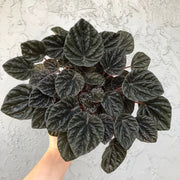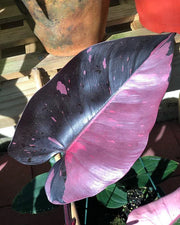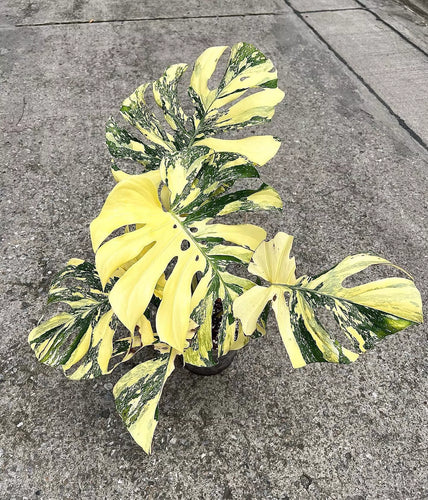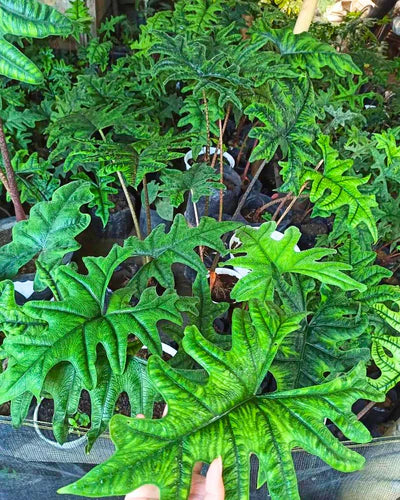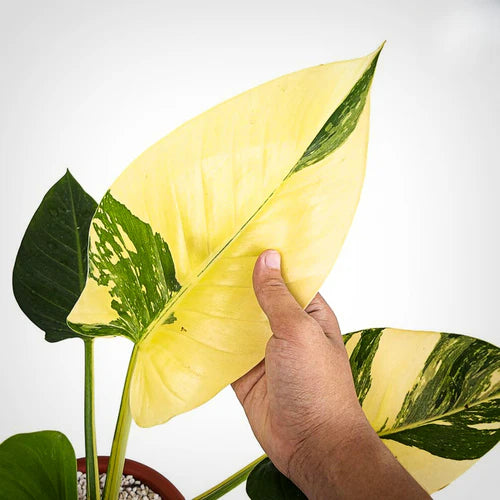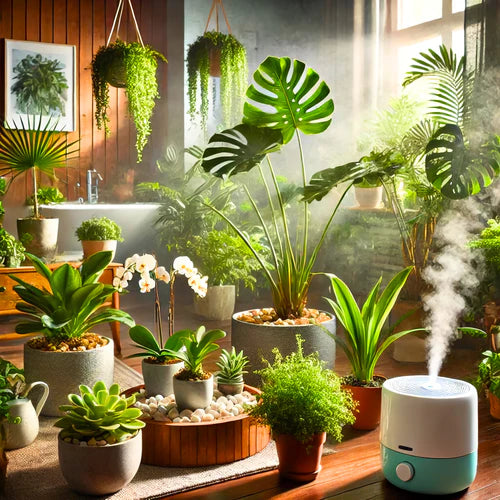Is Syngonium Panda Rare?
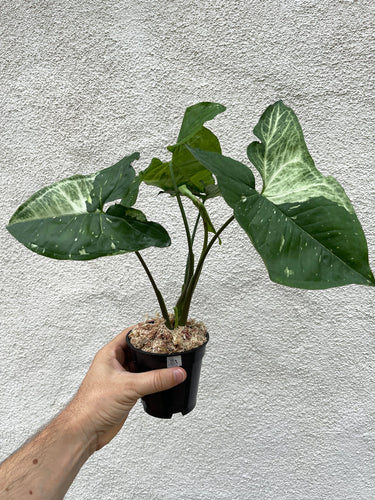
The Mysteries of the Rare Syngonium Panda:
Table of Contents
- Introduction: The Allure of Syngonium Panda
- Syngonium Podophyllum: A Brief Overview
- What Makes the Panda Galaxy So Special?
- The Rarity Factor of Syngonium Panda
- Why You Should Consider Owning One
- Tips for Syngonium Care
- Optimal Light Conditions
- Managing Moisture Levels
- Soil and Fertilization Recommendations
- Propagation Tips for Panda Galaxy Syngonium
- Pest Management
- Syngonium Panda Rare - Frequently Asked Questions
- Where to Find the Syngonium Panda
- The Magical Aesthetics of Syngonium Varieties
- Final Thoughts
Introduction: The Syngonium Panda (Syngonium Podophyllum)
Syngoniums have captured the hearts of plant enthusiasts for ages with their unique foliage and easy-going care regimen. Among the plethora of varieties, one that particularly stands out is the Panda Galaxy Syngonium. This distinct species is a showstopper in every sense. But what really makes it unique? Is the Syngonium Panda as rare as it’s often touted to be? In this comprehensive guide, we'll explore these questions and more to unveil the allure of this unique plant.
Syngonium Podophyllum: A Brief Overview
Syngonium Podophyllum, often called the Arrowhead Plant or Arrowhead Vine, is known for its versatile care needs and striking foliage. Originating from Latin America, it has spread across the globe as a popular houseplant. It comes in a variety of colors, shapes, and patterns, fitting perfectly in almost any home decor.
What Makes the Panda Galaxy So Special?
The Panda Galaxy variant of the Syngonium Podophyllum offers a bewitching combination of dark green and silvery-white variegation on its leaves, resembling a celestial night sky. A quick glance at the Panda Galaxy product page reveals the deep allure that captures collectors. This particular variant is not just about aesthetics; it also brings the same hardy characteristics that Syngoniums are generally known for, making it both beautiful and resilient. If you're looking for a cheaper option, we do also have Syngonium Panda Cuttings for sale.
The Rarity Factor of Syngonium Panda
So, is the Syngonium Panda rare? The answer is yes and no. While Syngoniums, in general, are commonly found, the Panda Galaxy is a variant that is more selectively available. This is due to the unique variegation patterns that make each leaf a work of art. These unique characteristics often mean that the Panda Galaxy Syngonium is in high demand but low supply, particularly when you're looking for a mature plant with well-established variegation.
Why You Should Consider Owning One
If you’re an enthusiast who loves a banana tree that offers both aesthetics and ease of care, the Panda Galaxy Syngonium is an excellent choice. The intriguing design on its leaves makes it a great conversation starter. Plus, it has air-purifying qualities that are a bonus for any indoor setting.
Tips for Syngonium Care
Being a tropical plant, the Panda Galaxy Syngonium loves warmth, indirect light, and a bit of humidity. Let’s delve into the specifics:
Optimal Light Conditions
Bright, indirect light is the key to keeping your Syngonium happy. Direct sunlight could lead to scorching, while low light could cause the variegation to fade. Consider investing in a light meter to get this aspect of care spot-on. If natural light is insufficient, you could also use grow lights to supplement.
Managing Moisture Levels
Too much or too little water can be detrimental for this plant. To avoid overwatering, a moisture meter can be a helpful tool. Keeping humidity levels between 60-80% will keep this banana plant happy. A humidifier may be needed in dry climates.
Soil and Fertilization Recommendations
Selecting the right soil mix is crucial for the Panda Galaxy Syngonium. A well-draining mix with organic matter is ideal. Consider using a combination of aroid mix, organic compost, and perlite to create a soil that provides both aeration and nutrition.
When it comes to feeding your plant, a slow-release fertilizer works wonders. Supplement this with occasional organic feeds like worm castings to provide the plant with essential micronutrients.
The Perfect Soil Mix Recipe
- 2 parts Aroid Mix
- 1 part Organic Compost
- 1 part Perlite
Feeding Frequency
- Use slow-release fertilizer once every 3-4 months.
- Add worm castings once every month for supplemental nutrition.
Shopping List for Panda Galaxy Syngonium
Ready to give your Panda Galaxy the best care possible? Here's everything you'll need..
- Aroid mix
- Organic Compost
- Perlite
- Slow Release Fertilizer
- Humidifier
- Moisture Meter
- Grow Lights
- Light Meter
Propagation Tips for Panda Galaxy Syngonium
Propagation of this banana tree variant is relatively straightforward and can be achieved through stem cuttings. For best results, the cutting should have at least one leaf and one node. Root the cuttings in water or directly in a mix of sphagnum moss and leca. Here are the steps for water propagation:
- Cut a healthy stem with at least one node and one leaf.
- Place the cutting in a jar with water.
- Wait for roots to grow, usually within 2-4 weeks.
- Once roots are at least 2 inches long, transfer to soil.
Pest Management
Being a tropical plant, the Panda Galaxy Syngonium can be susceptible to pests like spider mites and aphids. To keep these at bay, it's advisable to spray your plant with an insecticidal soap or neem oil solution. For persistent pest problems, a Bonide Systemic Houseplant Insect Control could be an effective solution. Always make sure to test a small area first before applying anything to the entire plant.
Syngonium Panda Rare - Frequently Asked Questions
1. Is Syngonium Panda rare?
Yes, the Panda Galaxy variant of Syngonium is relatively rare due to its unique variegation and high demand among collectors.
2. How do you care for Panda Galaxy Syngonium?
- Optimal light: Bright, indirect light
- Watering: Only when the top inch of soil is dry
- Soil: Well-draining, rich in organic matter
- Feeding: Slow-release fertilizer supplemented with organic feeds
3. What are the rarest Syngonium varieties?
Besides the Panda Galaxy, other rare Syngonium varieties include the Syngonium Mojito, Syngonium Albo, and Syngonium Three Kings.
4. Is Syngonium Panda a climber?
Yes, the Syngonium Panda is a climbing plant. For better support and larger leaves, add a clear moss pole for climbing plants.
5. What is the most beautiful Syngonium?
As Andre, I must say that the Syngonium Albo Variegata wins by far. Its dark green leaves splashed with large areas of white make this variegated plant unique. After adding it to a moss pole, the leaves have become impressively large, enhancing its beauty even more.
Where to Buy Panda Galaxy Syngonium
If you've decided that the Panda Galaxy is the perfect addition to your collection, you're probably wondering where to find one. Specialized plant shops or online stores that focus on rare and exotic plants are your best bet. Plant Vault is a great place to start. They offer not only Panda Galaxy Syngonium but also other rare and sought-after varieties.
Aesthetic Appeal of Panda Galaxy vs. Other Syngonium Varieties
Among the different kinds of Syngonium, the Panda Galaxy stands out for its dramatic leaf patterns and deep, rich colors. While some people prefer the subtler variegations of other types, Panda Galaxy is a showstopper in any plant collection.
Why Panda Galaxy Is a Collector's Item
- Unique variegation
- Deep colors
- Dramatic appearance
Lighting Requirements and Recommendations
Light is one of the critical factors in maintaining the beauty of this banana tree. A light meter could be handy in determining if your plant is getting enough light. However, you can't go wrong with bright, indirect light, and some direct morning sunlight.
Optimal Light Settings
- Bright, indirect light
- 1-2 hours of direct morning sunlight
- Consider supplementing with grow lights during winter
Monitoring Soil Moisture and Humidity Levels
Being a tropical plant, the Panda Galaxy Syngonium loves humidity. A humidifier can help maintain the optimal environment for your plant. Additionally, using a moisture meter can take the guesswork out of when to water your plant.
Recommended Humidity and Moisture Levels
- Humidity: 60-70%
- Soil Moisture: Allow the top inch to dry out between watering
Final Thoughts on Syngonium Panda Rare
The Panda Galaxy Syngonium is truly a plant worth considering for its unique aesthetic appeal, relatively easy care regimen, and rarity. While it may take a bit more attention than your average houseplant, the rewards are clearly evident in its stunning foliage and robust growth.
Conclusion:
If you follow the guidelines laid out in this comprehensive guide, you'll be well on your way to enjoying a thriving, beautiful Panda Galaxy Syngonium for years to come. Happy planting! :D
